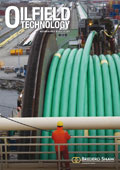Editorial comment
On 6 August this year, Nasa successfully completed the astonishing achievement of landing a US$ 2.5 billion ROV (arguably one of the most remotely operated vehicles ever at a distance of 248 million km from its control room) on the surface of Mars. The purpose of the ‘Curiosity’ mission to Mars is to establish whether, at some point in its history, Mars could have supported life at a microbial level. Essentially, the rover’s task is to explore for the presence of hydrocarbons; specifically organic carbon compounds that constitute the building blocks of life. Amid scenes of excited jubilation at the successful execution of this exploratory endeavour, Nasa appears to have restored its own, and its country’s, reputation in the global public consciousness as a world leader in space exploration. John Grunsfeld, Nasa’s head of science has been quoted as saying, “There are many out in the community who say that Nasa has lost its way, that we don’t know how to explore, that we have lost our moxie. While [Curiosity] is certainly an international collaboration, this feat is something that only the US can do – and the rover is made in the USA.”
Register for free »
Get started now for absolutely FREE, no credit card required.
The exploration of space serves the advancement of mankind’s understanding of the universe, but clearly also carries with it the powerful weight of national pride. Space agencies around the world compete and collaborate with each other in their work to explore our solar system, just as global energy companies compete and collaborate to explore our own cold, hostile and remote regions here on Earth. The hydrocarbons that our industry is searching for at the moment are located in the Arctic, a region that endures a similar climate to Mars in terms of temperature. Mars’ surface temperatures can plummet to -87 °C (-125 °F) while the coldest recorded temperature in the Arctic is around -68 °C (-90 °F).
Aside from rivalry between nations to ‘claim’ their piece of the Arctic pie and establish for themselves improved geopolitical positions, the debate continues as to whether the companies choosing to explore and operate in the region are truly prepared to handle any technological failures that could lead to environmental damage. And despite investments of billions of dollars into state-of-the-art technology and equipment such as innovative horizontal drilling, advanced capping stacks and research into how spilled oil would dissipate and be collected in an icy ocean, failures do happen. Just ask Nasa. And, while ignoring the possibility of such failures is ‘optimism’ in the case of those launching and guiding Nasa’s unmanned probes into the vast emptiness of outer space, it would be downright reckless for oil companies operating in the Arctic to just go ahead and hope for the best. Contrasting with Nasa’s public image of exploration, we should not expect to see scenes of nervous OGCs crossing their fingers at the moment of first production in increasingly difficult locations. Time and investment must continue to be channelled into researching and practicing solutions to all the potential problems the industry will face as it inevitably explores deeper into this region. Companies should also be prepared to walk away if, as Total’s head of development, Michel Hourcard explained in a recent issue of The Economist, they don’t feel prepared to take on the task: “Drilling in the Arctic is not being considered by us. Not at all. Our gases are enough for the moment. There are many technical challenges – there is too much ice, darkness and stormy weather.”
Exploration should continue, but continue with care. The last thing that anyone wants to hear again is, ‘Houston, we have a problem…’

